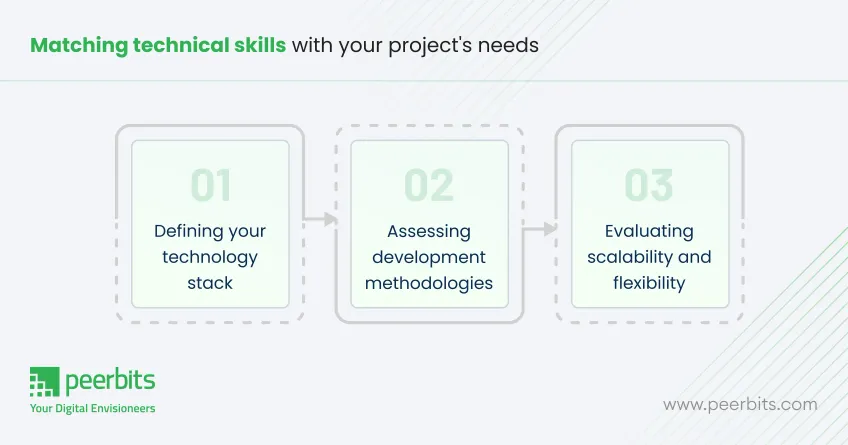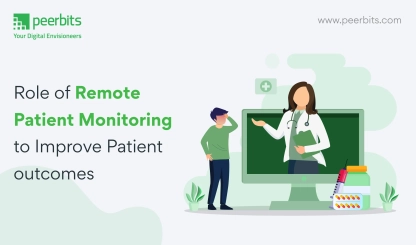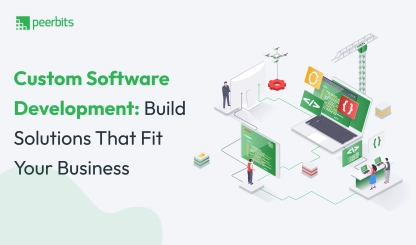If your business needs to stay ahead of the rest, investing in custom tools and software is necessary. And one of the best ways to do so is by connecting with a software development partner who can open up the possibility to grow by addressing your requirements.
Competitiveness is at an all-time high in every industry; therefore, digitizing your business is the first step. In such a case, instead of going for ready-made software, you can go with hiring a software development company that knows how to deliver the right software for your business.
A Statista report suggests that the worldwide software market is projected to reach US$740.90bn by 2025. Within this market, Enterprise Software is anticipated to dominate with a projected market volume of US$315.00bn by 2025.
The revenue in the Software market is projected to exhibit a steady annual growth rate of 4.87% from 2025 to 2029, which will result in a substantial increase in the market volume, reaching US$896.20bn by the year 2029. These statistics demonstrate the evident necessity for choosing the best software development company.
Most businesses outsource software development partners, making it a mainstream practice. Also, the number of software development companies is continually increasing along with the demands. Choosing a trusted software development partner for your business gets difficult.
Still, it also causes the market to get overheated and makes it more difficult to choose a dependable software development partner to work with. Here are some aspects you should consider when choosing a software outsourcing partner.
Establishing credibility and reliability
Evaluating the credibility and reliability of a software development partner is key to making the right decision. It ensures that the partner can meet your expectations and deliver consistent results.
Verifying client reviews and testimonials
Client reviews are an excellent way to assess a partner’s track record. Trusted platforms like Clutch and Google Reviews provide genuine feedback from previous clients. Focus on detailed reviews that describe challenges faced and how they were addressed, as vague testimonials are often unreliable.
Analyzing case studies and past projects
Case studies offer a clear look at how a partner solves problems. A good case study will detail the challenges, the solutions, and the results. Review these to see if the partner’s past projects are relevant to your needs and demonstrate the ability to deliver quality work.
Speaking to references
Talking to previous clients can offer direct insights into a partner's work style. Ask about communication, meeting deadlines, and how challenges were managed. Look for consistent feedback to gauge the partner’s reliability.
These are thee ways to assess a partner's credibility through client reviews, case studies, and references. So, what next? Let’s look at various software development pricing models to help you evaluate the financial aspects of your project.

Evaluating cost and pricing strategies
Cost is a critical factor when choosing a software development partner. However, evaluating the pricing models and understanding how they fit with your project is essential for making an informed decision.
Conducting a comprehensive cost analysis
When analyzing costs, break down the total project price, including development, ongoing maintenance, and any additional services like third-party integrations.
Be aware of hidden costs that might appear later, such as post-launch support or additional services required after the project is completed. Identifying these early can help avoid unexpected expenses down the line.
Pricing models
Knowing the different pricing models can help you choose the best one for your project.
-
Fixed price: Best for projects with a clear and defined scope, where deliverables and timelines are predictable.
-
Time and material: Suitable for projects with evolving requirements or those that need flexibility to change over time.
-
Dedicated team: Ideal for long-term projects requiring continuous collaboration with a dedicated group of professionals.
-
ODC (Offshore Development Center): A good option for large-scale projects that need a full outsourced team working from a different country. This is often used for projects requiring specialized skills or additional resources.
Balancing cost with value
It might be tempting to choose the lowest-cost option, but this can lead to compromises in quality, performance, and scalability. The lowest price may not deliver the best long-term results.
When evaluating cost, consider the value provided by the partner. Look at factors such as the partner’s ability to scale, their experience with your type of project, and their reputation for delivering quality results.
Aligning technical expertise and project requirements
Matching your software development partner’s skills with the specific needs of your project is essential to avoid potential challenges and achieve smooth delivery.

Defining your technology stack
Choosing the right technology stack is key for development. It’s important to ensure the partner has expertise in the tools and frameworks that align with your project requirements.
Check how their technology stack integrates with your current systems. Think about future needs and whether the partner can meet your goals as your project progresses.
Assessing development methodologies
Different methodologies can affect the way a project unfolds. Common methods include Agile, Scrum, and Waterfall.
Determine which methodology fits your project. Agile or Scrum is typically a good choice for projects with changing requirements, while Waterfall works better for projects with fixed goals.
Evaluating scalability and flexibility
As your project grows or changes, the partner’s ability to adjust is critical. Assess whether the partner can expand their team or change tools as needed throughout the project lifecycle.
Exploring outsourcing models
Choosing the right outsourcing model affects your project’s cost, efficiency, and success. Each model offers different benefits and challenges depending on your project needs.
Types of outsourcing
-
Onshore: Collaborating with a local partner simplifies communication and eliminates time zone differences. While it offers easy access to the team, the costs tend to be higher compared to other models.
-
Offshore: Offshore outsourcing offers cost savings by working with teams in countries with lower labor costs. However, managing time zone differences and potential cultural barriers can be challenging.
-
Nearshore: This model balances cost and proximity. Working with a nearby team reduces time zone issues and offers more affordable rates compared to onshore partners.
-
Hybrid: The hybrid model combines different outsourcing types to suit specific project requirements. For example, you could use offshore teams for development while working with an onshore team for project management and client interaction.
Read more: How to Choose the Right Outsourcing Model from Onshore, Offshore, Nearshore?
Factors to consider for outsourcing
When outsourcing, it’s important to consider legal compliance, such as GDPR or HIPAA, especially if your project involves sensitive data.
Time zone differences can affect communication and coordination. Establishing clear communication protocols and regular check-ins will help mitigate these challenges. Cultural compatibility also plays a role in how smoothly teams work together.
Communication and collaboration practices
Effective communication and collaboration are fundamental to a successful partnership with a software development team. Ensuring smooth interaction throughout the project helps keep everything on track and lined up with your goals.
Evaluating communication efficiency
Communication is a key aspect of a productive development process. It’s important to assess how the partner provides consistent updates and maintains transparency at every project stage.
Utilizing tools like Jira for task tracking, Slack for instant messaging, and Zoom for meetings ensures that communication is quick and clear. These tools help keep both sides aligned on progress and expectations.
Collaboration during the project lifecycle
Frequent communication, such as regular stand-ups or progress meetings, plays a major role in project success. These meetings help identify challenges early and provide opportunities to address them.
Trial projects or pilot runs can also be a great way to evaluate how well you collaborate with the partner before committing to a full-scale project. This helps establish whether your workflows and communication styles are compatible.
Questions to ask a potential software development partner
Asking the right questions helps you evaluate how a potential software development partner can manage your project effectively and deliver quality results. Here are key questions to ask:
- What are your strategies for handling unforeseen project challenges?
- Can you provide a detailed roadmap for project delivery?
- How do you ensure data security and compliance with industry standards?
- What is your process for post-launch support and maintenance?
- How do you handle scope changes or project revisions?
- What measures do you take to guarantee quality assurance throughout the development process?
- Can you share examples of past projects similar to ours?
- How do you ensure clear and consistent communication during the project lifecycle?
- What tools or platforms do you use for project tracking and reporting?
- How do you manage time zone differences and ensure smooth collaboration?
- What is your process for onboarding new clients and getting them up to speed with the project?
- How do you handle intellectual property rights and confidentiality agreements?
- What is your preferred development methodology and why?
- Can you provide references from clients you’ve worked with on similar projects?
Legal, security, and compliance considerations
Ensuring legal, security, and compliance standards are met is essential when working with a software development partner. Well-drafted agreements and secure practices protect your business and sensitive information.
Reviewing contracts and agreements
Focus on key elements like Service Level Agreements (SLAs), Non-Disclosure Agreements (NDAs), and well-defined scopes of work when reviewing contracts. These details clarify expectations and responsibilities.
Negotiating flexible terms is also important to make room for any future adjustments if project requirements change.
Ensuring data security and compliance
Make sure the partner aligns with data protection regulations such as GDPR, CCPA, or HIPAA to safeguard sensitive information.
Assess the partner’s security practices or certifications to verify how they handle data privacy and security throughout the project.
Conclusion
Evaluating a software development partner requires attention to several key areas: from understanding their expertise and reviewing contracts to examining their pricing models and ensuring they have the right data security practices.
It is essential to assess their communication effectiveness and ensure their technical capabilities match your project's needs.
A strong partnership is built on trust, shared goals, and a clear vision for the future. It’s important to take the necessary time to evaluate all these factors carefully.
The more thorough the evaluation process, the better the chances of securing a partner who will contribute to the long-term success and quality of your project.









